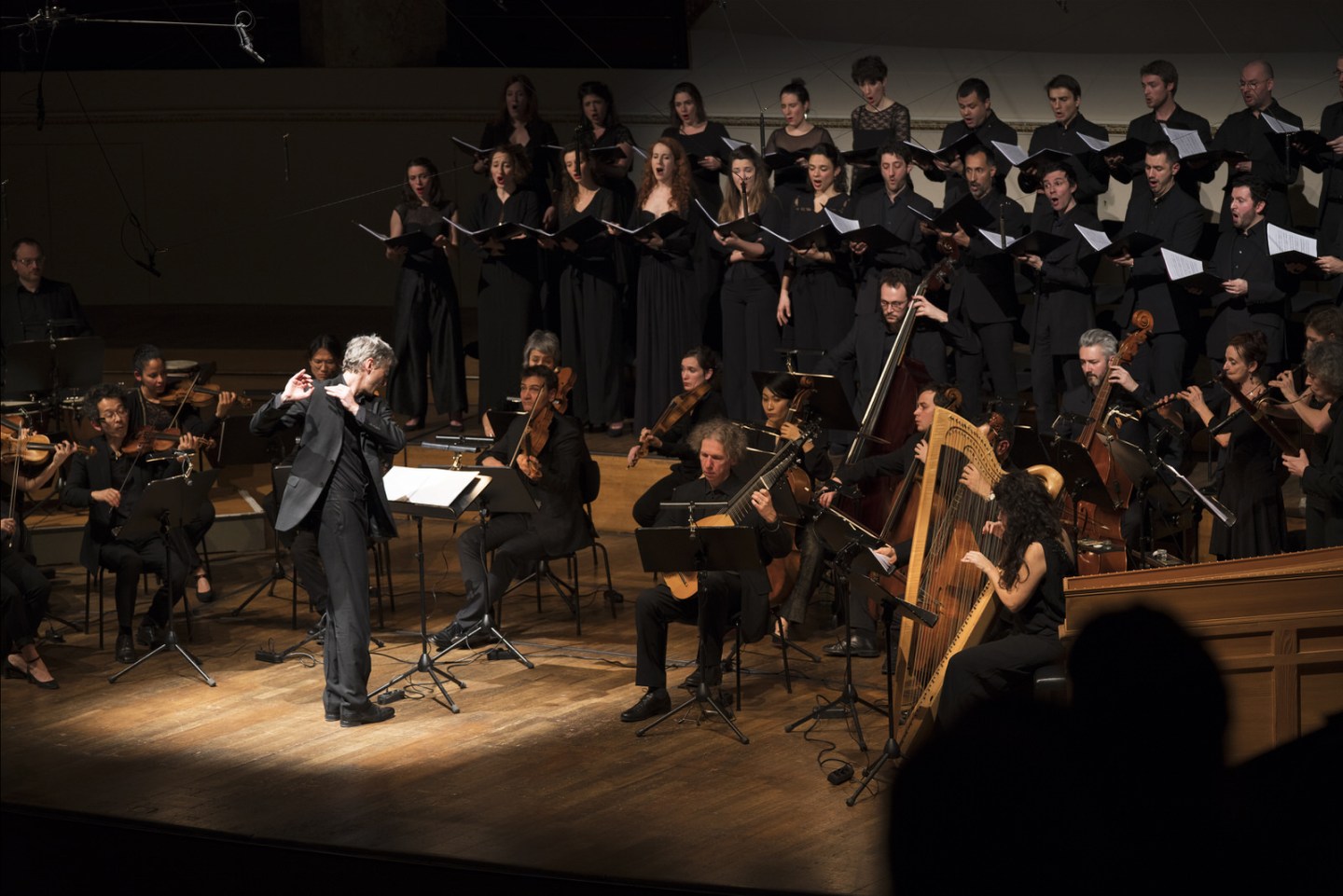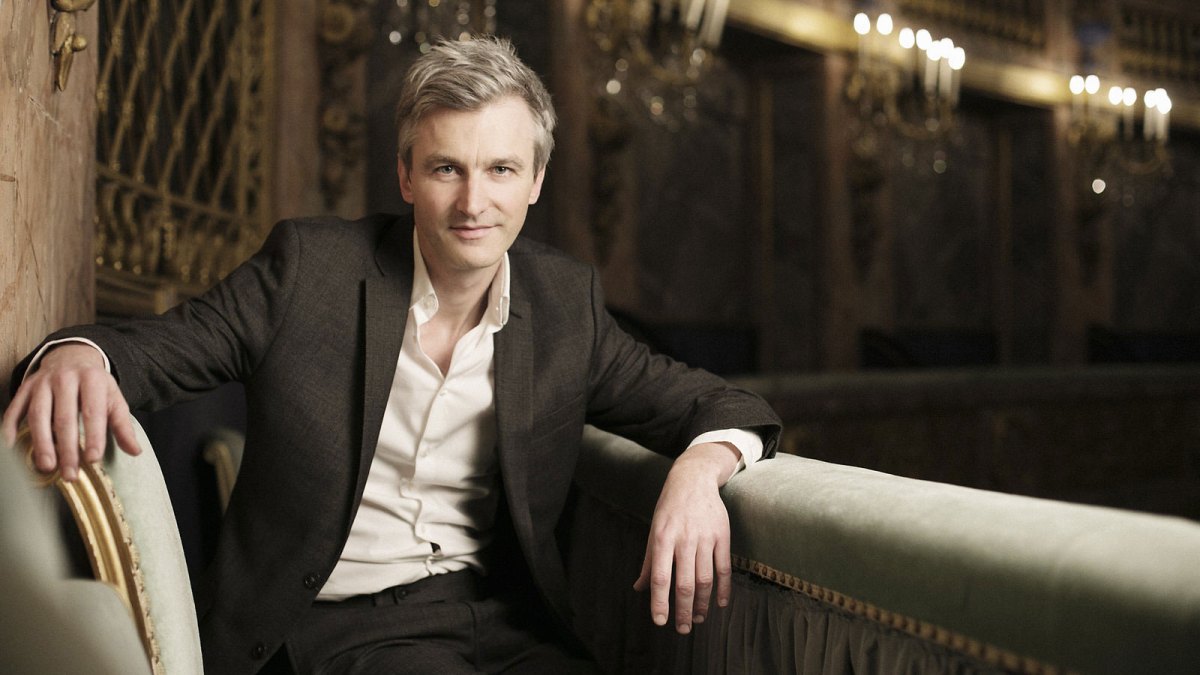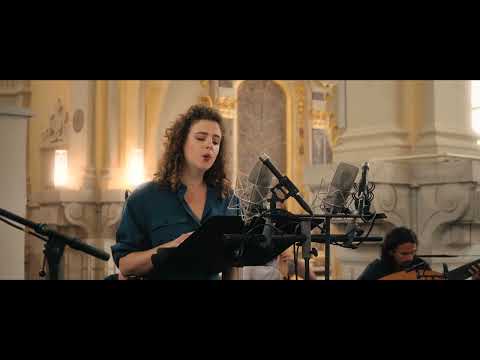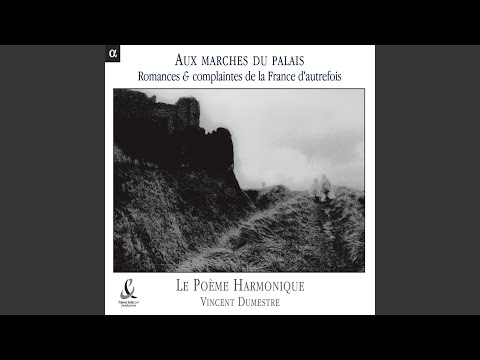Since founding the early music ensemble Le Poème Harmonique in 1997, Vincent Dumestre has brought Palmeritan puppeteers to perform a forgotten opera about the mad Roman emperor Caligula; collaborated with circus players on 17th-century church music; and invited a diverse array of contemporary theater directors and choreographers to stage, among other things, a Spanish Baroque zarzuela, a play by Molière, and a reconstruction of the commedia dell’arte. In May, Dumestre released a recording of the wedding mass of Louis XIV; this fall, he directed a series of concerts with mezzo-sopranos Isabelle Druet and Stéphanie d’Oustrac (Poulenc’s great-niece) in a wide-ranging program of music from Monteverdi to the Roaring Twenties. Dumestre’s latest album with Le Poème Harmonique, “Nisi Dominus,” features mezzo-soprano Eva Zaïcik in a selection of music from Venetian religious processions and a girls’ orphanage and conservatory, L’Ospedale della Pietà, for which Vivaldi composed his famous setting of the 127th Psalm.
I spoke with Dumestre shortly after he directed a performance of the same selection for the Staatsoper Berlin’s December 2022 Barocktage (Baroque Days). We talked about his unusual musical trajectory, questions of historical context in early music, and some of his upcoming projects. These include a new version of the lyric tragedy by Lully, “Armide”; new recitals organized around music from the Roaring Twenties in Paris; a concert version of Cavalli’s “L’Egisto”; a Baroque zarzuela, “Coronis”; Monteverdi’s “Selva Morale”; and an unpublished opera by Galuppi—“on the theme of gender!”—“L’Uomo-Femmina.” Dumestre will return to Berlin on May 4, 2023 for a performance of Allegri’s “Miserere” at the Philharmonie, and looks forward to performing for the “marvelous German public.”
VAN: You were born in Saint-Germain-en-Laye, near Paris, in May 1968. What were you like before you felt drawn to Baroque music?
Vincent Dumestre: My trajectory is fairly unusual. Before getting interested in classical music, I had two passions: art history—which brought me to the École du Louvre in Paris after a literary baccalauréat in the South of France—and rock, country and folk music. I started playing folk guitar at traditional folk dances where my parents played the hurdy-gurdy and the accordion. The interest in classical guitar came later, when I was about 17 or 18.

After graduating from the École Normale de Musique de Paris, you studied lute, baroque guitar, and theorbo with Hopkinson Smith, Eugène Ferré and Rolf Lislevand. What did you learn from these figures?
The École Normale de Musique de Paris gave me a solid technical base. I studied with Dominique Daigremont and took courses with Alberto Ponce, a master of 19th- and 20th-century Spanish guitar music. Daigremont, who was also a Baroque guitarist, gave me a taste for the Baroque repertory, but it wasn’t until after I got my diploma that I cut my guitarist nails and sold my guitar for a Baroque lute, a theorbo, then a Baroque guitar. I apprenticed with Eugène Ferré, who taught me the rudiments of the theorbo; with Hopkinson Smith, whose charisma in classes was precious and motivating; then with Rolf Lislevand, who taught me the basics of basso continuo over the course of two years in Toulouse. Everything else I learned on stage, and through accompanying great musicians—like Jordi Savall, Philippe Pierlot, and others—who gave me my first opportunities for ensemble playing.
In his Confessions, Jean-Jacques Rousseau describes “the riches of the art, the exquisite taste of the songs, the beauty of the voices, the justice of the execution, everything in the delicious concerts” given in the middle of the 17th-century by Venetian orphan girls in charities established for the education of young, impoverished women. Your latest album, “Nisi Dominus” (Alpha Classics, Fall 2022), with Eva Zaïcik and Le Poème Harmonique, is dedicated to the music of Vivaldi, who in 1714 was named concertmaster of one of the orphanages described by Rousseau, L’Ospedale della Pietà (for which Vivaldi would go on to write his “Nisi Dominus” and “Invicti bellate” several years later). Does this orphanage, which was also a musical conservatory, have any interest for you apart from being the place of composition of several of Vivaldi’s works?
To discover the place for which a work was composed—on what occasion, in what context—is fascinating. Not for its anecdotal quality, of course, but for the musical deductions that can be made about the repertory, the number of musicians, the sense of the work. That’s the project I’m working on right now: to reunite a masterpiece and the place that welcomed it. We recorded Vivaldi’s “Nisi Dominus” for [the French-German TV station] Arte in the church of the Pietà and in the Franciscan convent, and I would like to give Allegri’s “Miserere” to the Sistine Chapel, Monteverdi’s “Combattimento” to the Palazzo Mocenigo. Each time, there’s a better understanding of the work, a more judicious choice of the pieces that can surround and arise from it. In the case of the orphanage of the Pietà, one understands a major part of Vivaldi’s music better thanks to the indications this place gives us: about the girl singers or the violinists for whom he worked, on the type of instrumental and vocal groups, the acoustics, and also the tempi, notably.
The latest from VAN, delivered straight to your inbox
The solo part of the “Nisi Dominus” is usually given to countertenors, whereas you made the (perhaps more historically correct) decision to entrust it to the mezzo-soprano Eva Zaïcik. Does a rigid, sexed division of voices exist in Vivaldi’s music?
Nothing—or almost nothing—is rigid in the aesthetic of Baroque music! No one at the time bothered with searching for a style; one mastered the given style perfectly, not knowing how to do anything but that. In Venice, concerts featured instruments that today seem quite exotic to us (the colascione for example)…Pragmatism reigned supreme. Music is not yet a sublime ideal that calls on composers to elevate or express themselves, but rather the work of a craftsman— frequently exhausting (Monteverdi complains about this) and closely tied to financial constraints and contextual circumstances. So it was for material reasons and not by musical choice that this “Nisi Dominus” was historically sung by a mezzo-soprano: This was the voice Vivaldi had available from the conservatory of the Ospedale. When he writes for the opera, the constraints are different, so the choices are too. Getting back to the mezzo voice for the “Nisi Dominus” is thus a historical necessity today. But in our period, which leaves the choice to performers, it’s not forbidden to give the role to countertenors. It’s just necessary to remember that this voice didn’t really exist in Italy (where its place was taken by the voice of the castrato), nor in France (where its role was filled by the voice of the haute-contre). And it’s not impossible that Baroque music for countertenor in England was largely an invention of the 20th-century.
Nicknamed “the red priest,” Vivaldi took the cassock in 1703, and his students at the Pietà sang behind the screens of the chapel’s choir loft. Your new album joins his setting of the 127th Psalm with older religious music (lauds) preserved in the Venetian religious processions of Vivaldi’s time. When one plays this in a venue like the Staatsoper Berlin, is it possible to revive its sacred aspect?
A Baroque musician is always a bit sisyphean. We spend half our lives figuring out what our music sounded like, what the acoustics of the period were, how the rituals of the music unfolded in their religious setting, the instrumentation. Then there’s the reality: you have to accept not playing with the right number of musicians, nor with the right acoustic, and rarely with the same program used in the period, obviously. Our passion pushes us towards the most historically informed research possible, then we set ourselves the task of working within the constraints of the 21st century. In the heart of the musician, the historian or musicologist makes way for the creator—for the artist! Because you have to adapt, you have to find tricks to give meaning to a repertory within the constraints of the present. For that, the Staatsoper is well-suited: it’s not a sacred space, but it’s a place where the acoustics are both generous and precise, a place whose subtle and modern configuration let us bring alive the different characteristics of the program organized around the “Nisi Dominus.” Spiritual lauds—songs set to paraliturgical texts—worked just as well as in a church thanks to the different levels of balconies and the perfect acoustics in every point of the hall. Similarly, sung processions are possible because the audience sees equally well throughout. The spirituality of this music isn’t in the letter, but in the spirit: the audience isn’t Catholic, but the listening relationship created by the musical tension gives the music an obvious spiritual dimension.
You’ve maintained an unusually varied series of collaborations with choreographers (Julien Lubeck and Cécile Roussat), directors (Omar Porras, Benjamin Lazar), even a marionettist (Mimmo Cuticchio). What kind of relationship is possible today between early music and contemporary performance in its many forms?
Early music today needs two apparently irreconcilable extremes. On the one hand, recontextualization, organology, musicology, style, all of these disciplines that push us to get as close to the composer as possible. As close as possible—but never totally, because we’re not archaeologists, and it’s futile to want to mimic a past epoch. So on the other hand, there comes a moment when you have to free yourself from all that, which works best when the artists like and know the repertory well. The artists you just mentioned are really fellow travelers who, of course, create performances for today’s audiences, using today’s means, but who also have a great respect for the repertory. In this way, contemporary performance can take place in complicity with historical music. The two extremes, yesterday and today, find a crossing point that allows dialogue. ¶
This interview was translated from the original French by the author.
Subscribers keep VAN running!
VAN is proud to be an independent classical music magazine thanks to our subscribers. For just over 10 cents a day, you can enjoy unlimited access to over 875 articles in our archives—and get new ones delivered straight to your inbox each week.
Not ready to commit to a full year?
You can test-drive VAN for one month for the price of a coffee.




